Recent Articles
Popular Makes
Body Types
10 Best Electric Cars to Buy in 2017
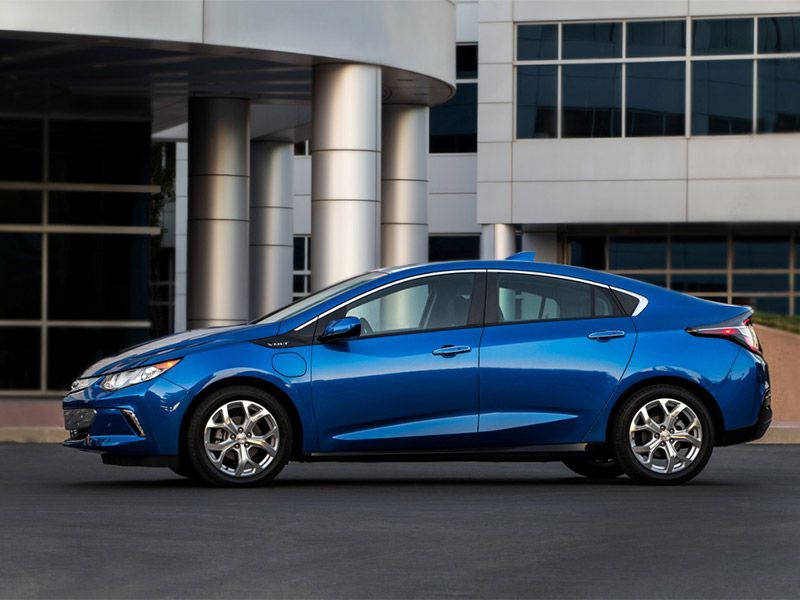
2016 Chevrolet Volt exterior profile ・ Photo by Chevrolet
Electric cars are not only good for the environment, but they can be good for your wallet—gas prices may fluctuate, but electricity is (relatively) cheap, and with a charger installed in your garage, you can leave every morning with what amounts to a full tank. Which electric vehicle (EV) should you consider buying? Here are 10 we really like, presented in alphabetical order.
Chevrolet Bolt
The all-new Chevrolet Bolt is the newest EV on this list, and arguably the most significant: It is the first electric car to offer 200-plus miles of range (238, to be specific) and a sub-$30k price tag (actually $37,495, which drops to $29,995 for buyers who qualify for the $7,500 federal tax credit—that’s not a write-off, by the way, but a credit against the tax you owe). This is pretty much what Tesla has been promising us with the Model 3, but while the Tesla’s release date has yet to be set, the Bolt is available now—it was launched in California and Oregon in late 2016 and will spread to other states in 2017.
Though the numbers are impressive, there is more to the Chevrolet Bolt than price and range: This is a comfortable car with ample room for four and an instrument layout that is both innovative and straightforward. And while it may not be as sexy as the Tesla Model 3, it’s unlikely that it will suffer from the teething problems that seem to afflict new Tesla models—after a century of building cars, General Motors knows how to test their products thoroughly before unleashing them on the general public.
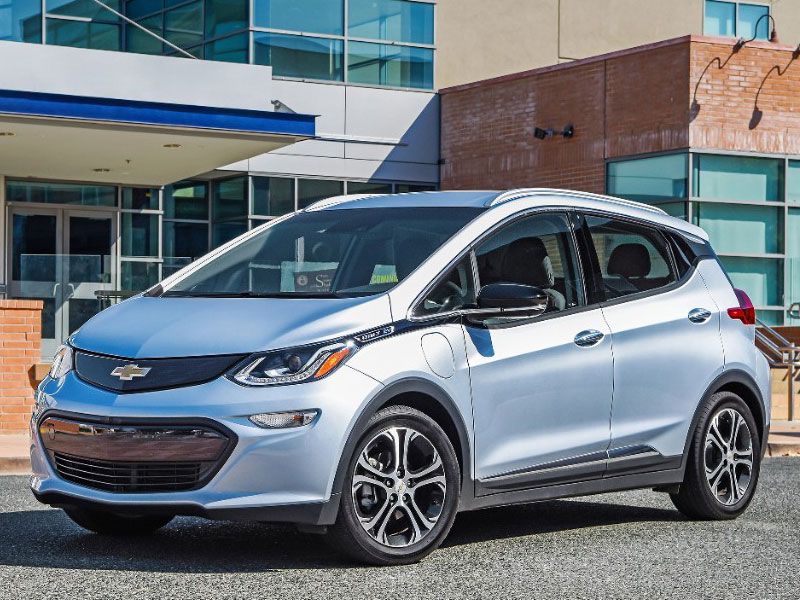
Photo by General Motors
Chevrolet Volt
Technically, the Chevrolet Volt is not purely an electric car; it blurs the line between electrics and plug-in hybrids. A fully-charged Volt goes 53 miles or so on battery power alone, and if the electric charge runs out before you can plug in, a gasoline engine fires up to produce power and keep the Volt going for another 300 miles or so. In a sense, it’s two cars in one: A pure electric for your weekday commute and a gas-electric hybrid for those long weekend getaways. Best yet, the Volt’s battery is large enough that it qualifies for the full $7,500 federal tax credit, which brings the price down significantly. The Volt’s interior is a bit cramped compared to some cars on this list, because it must make room for both a gasoline engine and a battery pack (the latter is a T-shaped affair that runs down the center of the car and bisects the back seat), but it’ll do nicely as a family car, provided the kids aren’t too tall.
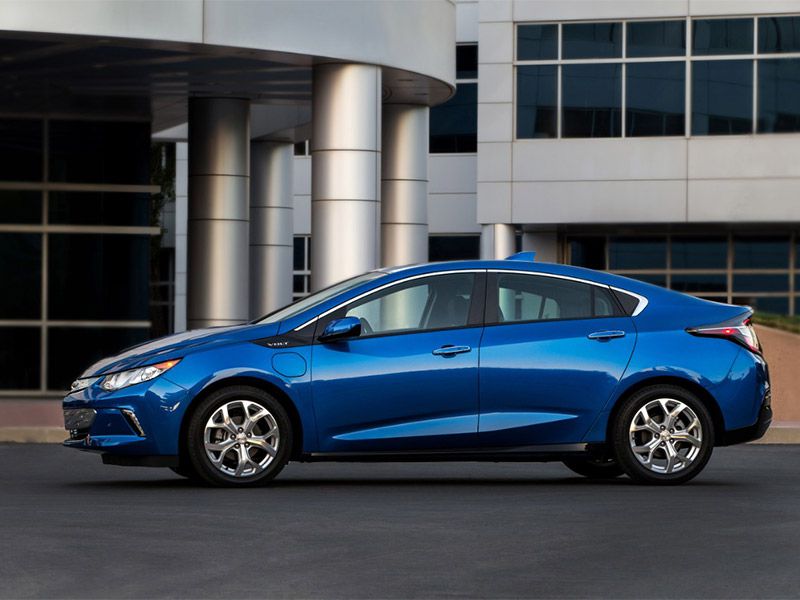
Photo by Chevrolet
Chrysler Pacifica Hybrid
Chrysler’s new Pacifica Hybrid minivan certainly isn’t a full-on electric car, but it does a darn good imitation of one: When its battery is fully charged, it delivers an EPA-estimated 33 miles of electric-only range, which should be enough for most American families to shuttle the kids to school, get to work, and make a quick detour to the shops before picking the kids up and heading home. And its 16kWh battery is large enough to qualify it for the full $7,500 federal tax credit, so that and state incentives can bring the price down to the same neighborhood as a gasoline-powered minivan. The Pacifica Hybrid is the only 7-seat vehicle to offer a plug-in hybrid drivetrain, and while it may not exactly qualify as an electric car, it’s a great way for big families to go (partially) electric.
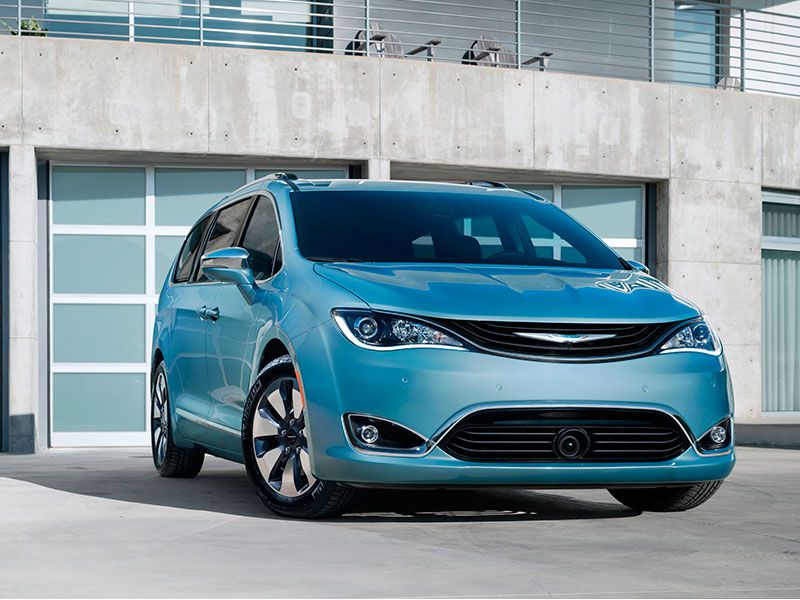
Photo by Fiat Chrysler Automobiles
Fiat 500e
The Fiat 500e is a favorite of ours, not just because of its cute and cheeky styling, but for the fact that it’s very quick and a lot of fun to drive—in fact, we like driving it even better than the regular gasoline-powered Fiat 500. Unlike gasoline engines, electric motors can deliver their maximum torque at any speed (including from a standstill), and in fact EV engineers generally turn down the power flow to keep the cars from shredding their own tires. Fiat’s engineers have a good sense of fun, and they’ve set up the 500e to be nice and quick; of course, the 500e’s small size helps with acceleration and agility, as well as easy parking. The 500e doesn’t offer Level 3 fast charging, but its relatively small battery only needs 4 hours to juice up on a Level 2 charger (the type you’d most likely install at home). The bad news is that Fiat only sells the 500e in California and Oregon; the good news is that they offer ridiculously cheap lease deals, so running costs are laughably low.
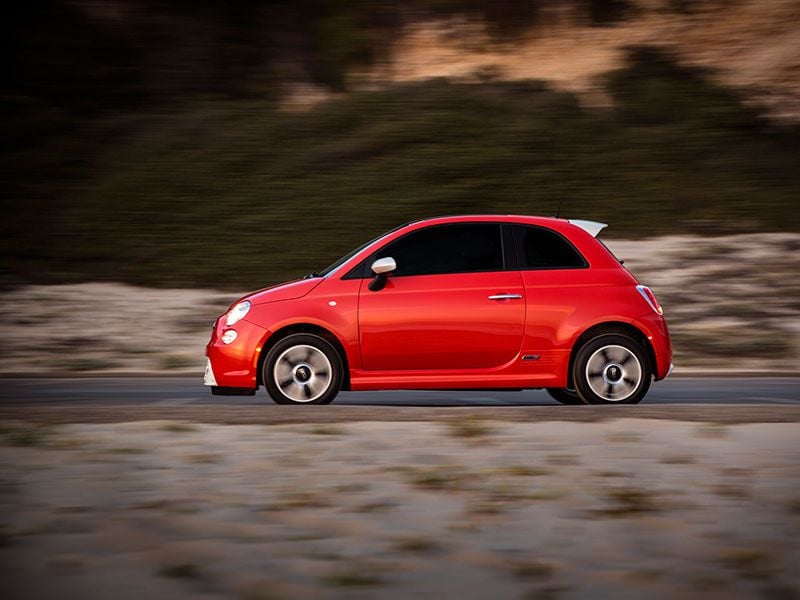
Photo by Fiat Chrysler Automobiles
Ford Focus Electric
The Focus Electric is an easy car to overlook: It doesn’t scream its “electricness” at the top of its lungs, and if one drove by, you might not even realize you were looking at an electric car (unless you noticed the silence of its passage). But the Focus is functional: It has a useful 100-mile range, it’s enjoyable to drive, and it’s reasonably priced: $29,995, which drops to $22,495 after the federal tax credit. The Focus is a bit shy on back-seat space compared to some of the other cars on this list, but if you’re looking for an electric car that goes about its business quietly and efficiently—or if you’re a seasoned EV owner who is tired of people stopping you and asking about your car—the Focus Electric is a great way to fly under the radar.
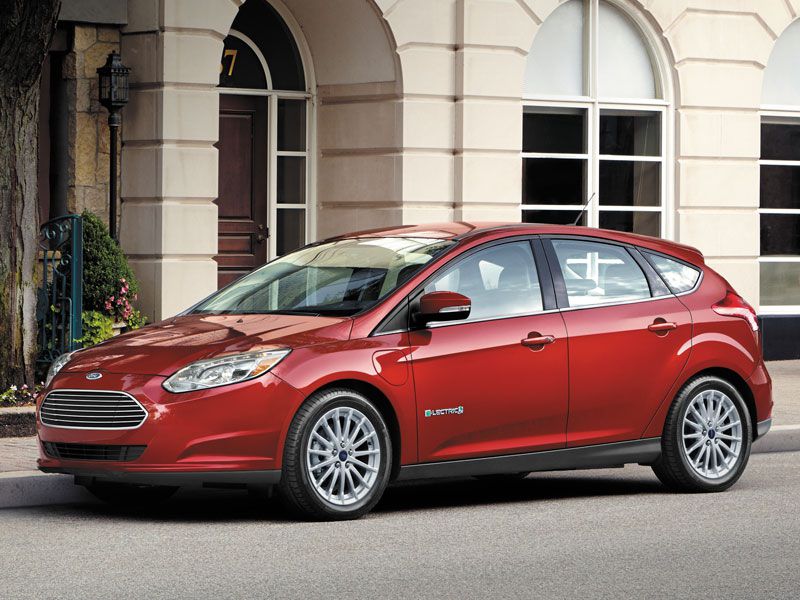
Photo by Ford
Mitsubishi i-MiEV
Electric cars tend to cost more than comparably-sized gasoline cars, but no one seems to have told Mitsubishi: The i-MiEV lists for $23,845, which drops to just $16,345 after the Federal tax credit (and even less if you qualify for state incentives), about what you’d pay for a compact runabout. Granted, the i-MiEV is a bit of an acquired taste: Its egg-shaped profile is unusual, its interior lacks the high-tech gee-gaws found in other electric cars, and its 62-mile range is rather modest compared to other electric cars on this list. But the i-MiEV does have Level 3 quick-charge capability, and with the i-MiEV’s relatively small battery, “quick” is the operative word. (Level 2 charge time is a bit lengthy at six hours.) As small as it is, the i-MiEV drives like a larger car and offers a surprising amount of passenger space (especially when it comes to headroom). For those who aren’t sure if an electric car is for them, the Mitsubishi i-MiEV is an great cost-effective way to try out electric motoring.
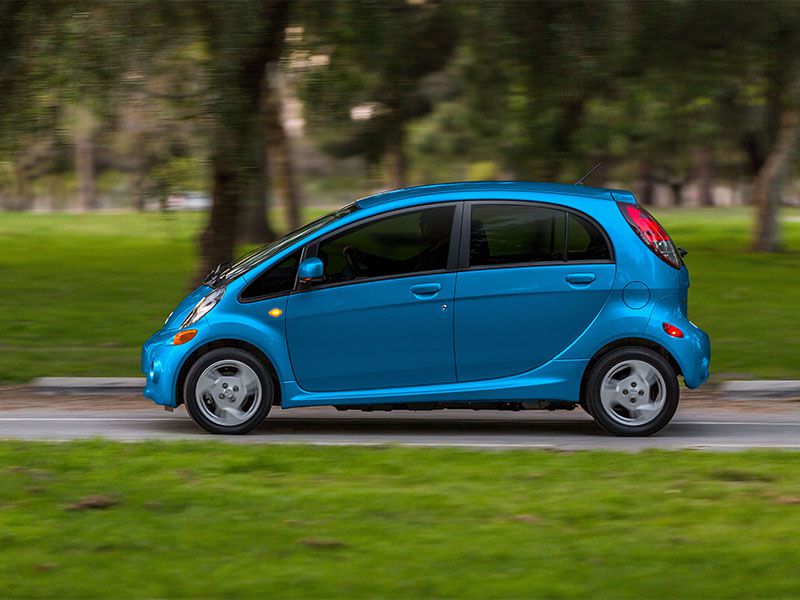
Photo by Mitsubishi
Nissan Leaf
The Leaf is to electric vehicles what the Prius is to hybrids: Arguably one of the best-known and most popular models, and not just because it was one of the first of the modern crop of EVs to go on sale. The Leaf looks unique (though its styling is, admittedly, a bit of an acquired taste), and its interior is nicely appointed. Though the Leaf predates all of the cars on this list, Nissan has continued to improve it, most recently with a 30 kWh battery that provides an EPA-rated 107 miles of range. Nissan also has a low-cost model, the Leaf S, priced at $31,545; after the $7,500 federal tax credit and state incentives, that brings the price down to little more than a nicely-equipped compact hatch. (Note, however, that the S comes with a 3.3 kW onboard charger, which lengthens charge times. If you’re going for the S, we recommend the $1,770 Quick Charge package, which upgrades to a 6.6 kW charger with DC fast charge capability; it’s standard on Leaf SV and SL models.)
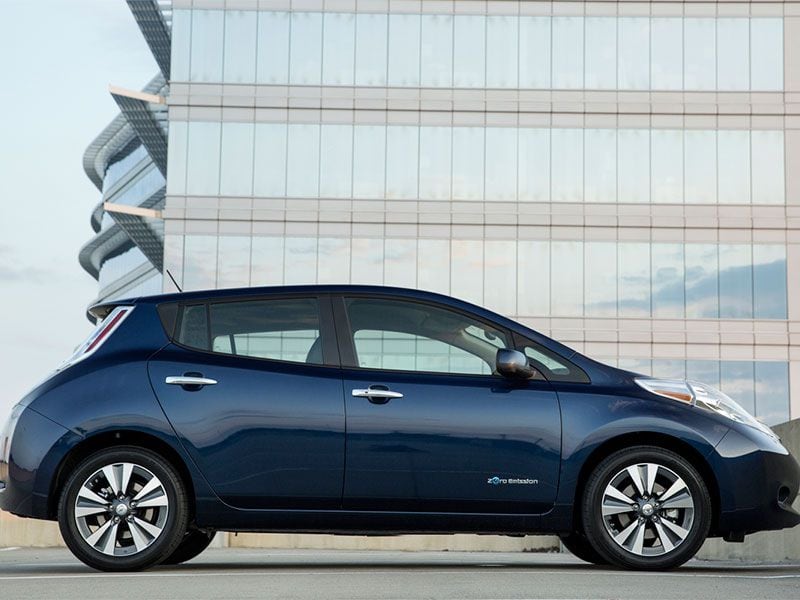
Photo by Nissan
Smart Fortwo Electric Drive
Developed primarily for Europe, the 2-seat Smart Fortwo minicar is perfect for maneuvering (and parking) in crowded urban areas—and for those short urban drives, the electric version makes even more sense. The Smart Fortwo ED’s performance is a bit leisurely—it doesn’t accelerate much faster than the gas version—but the real grins come when you squeeze it through tiny gaps in traffic, pull a U-turn in a narrow alley, and park two of them nose-to-tail in a standard-size parking spot. Smart hadn’t announced an official EPA range when we posted this article; we expect it will be around 75 miles, which works well for the urban and suburban driving to which the Fortwo is best suited.
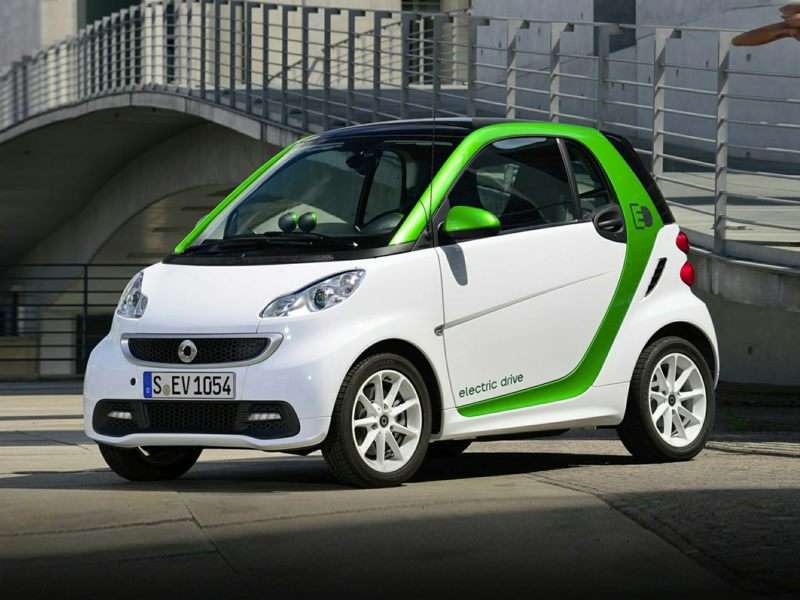
Photo by Mercedes-Benz
Tesla Model X
Stepping into Tesla’s 7-seat electric SUV feels like being transported to the future: The doors open and close themselves, the windshield reaches up into the roofline, and most of the controls are accessed through a large central screen. Tesla has even dispatched traditional door locks and ignition switches: Walking up to your Model X unlocks it, and getting inside switches it on. Battery range ranges from 237 to 289 miles, and the Model X is ridiculously fast—the top-of-the-line P100D will get to 60 MPH faster than most supercars. And is there anything cooler than those falcon-wing rear doors? On the downside, the Model X is ridiculously expensive (even the entry-level model costs $81,300 after the federal tax incentive), build quality seems to range from mediocre to abysmal, and Tesla’s proprietary charging connectors means none of their cars are compatible with the chargers used by other EVs and plug-in hybrids. Teslas are best suited to those who have the patience (and finances) to be on the cutting edge of electric car technology; the Model X is as sharp as you can get.
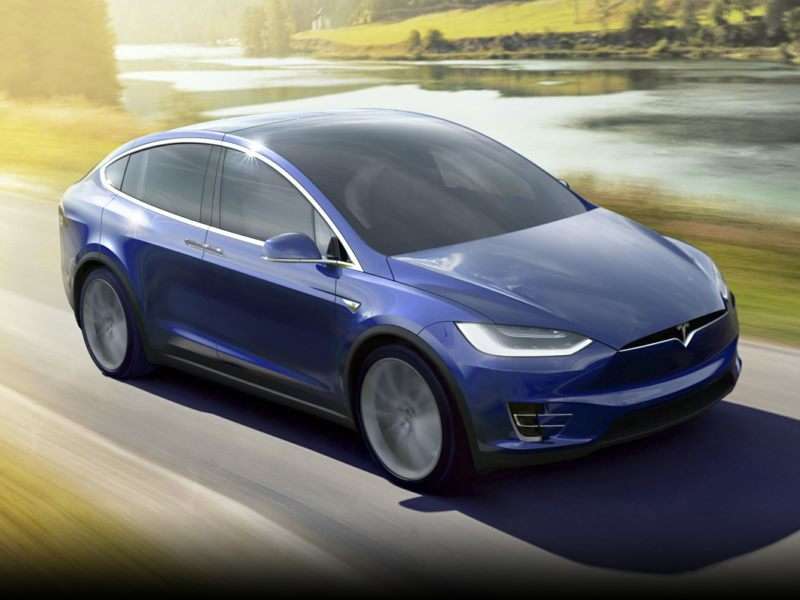
Photo by Tesla
Volkswagen e-Golf
The Volkswagen Golf is a best-seller throughout Europe, where it is valued for its city-friendly size and family-friendly proportions. Volkswagen makes an electric version called the e-Golf, and it brings that same sensibility to the electric car market: It is functional and pleasant to live with, and except for the silent driving experience and the fact that you plug it in instead of gassing it up, it’s easy to forget that the e-Golf is anything other than an ordinary car. Volkswagen has implemented a range of improvements for 2017, including a more powerful electric motor and a new battery that boosts range to 124 miles. Long-term reliability is always a bit of a concern with Volkswagens, but that’s why the simplicity of an electric car is such a boon: There simply aren’t that many mechanical bits to break.
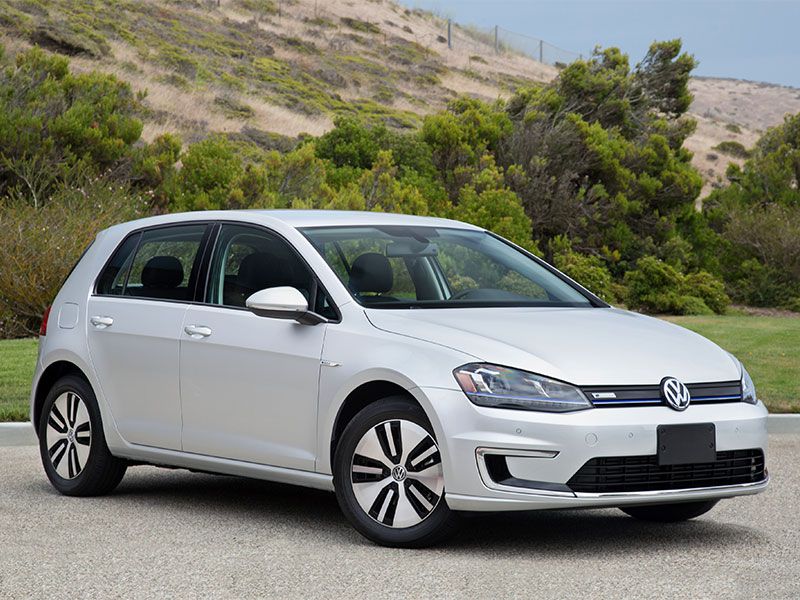
Photo by Volkswagen